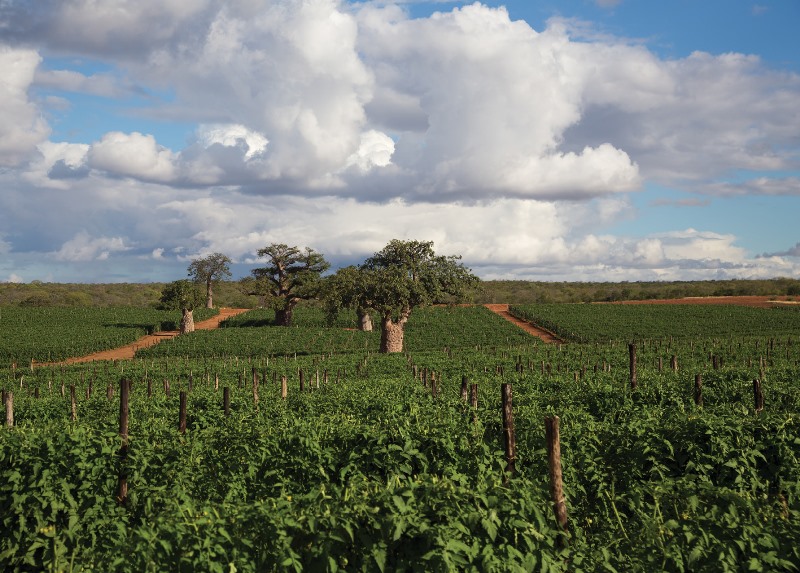A regional overview of the Limpopo Province
By John Young
The Limpopo Province’s 125 754 km² covers a remarkably diverse geographical and cultural landscape that is also rich in minerals and agricultural products.
The Mapungubwe Cultural Landscape, a UNESCO World Heritage Site in the north of the province, illustrates a rich history of a sophisticated trading kingdom in the period between 900 and 1300 AD. Archaeological finds in the Waterberg area point to Stone Age settlements. The Makapans Valley (Ndebele history and palaeontological exhibits) is linked to the Cradle of Humankind site in neighbouring Gauteng: both are important fossil sites.
The Waterberg Biosphere has been declared a UNESCO Biosphere Reserve. Most of the famous Kruger National Park falls in the Limpopo Province and the province is home to many private game lodges, nature reserves and golf estates.
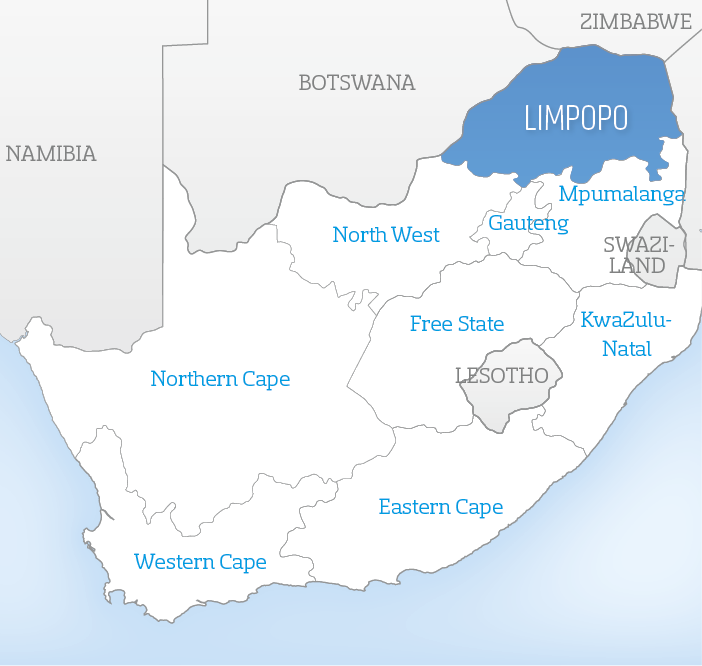
The province shares international borders with Botswana, Zimbabwe and Mozambique and its South African neighbours are the provinces of Mpumalanga, Gauteng and North West. Proximity to the large cities of Gauteng (including Johannesburg and Pretoria) make it easy for horticultural and other products to be sold in that large and prosperous market.
The N1 highway (“Great North Road”) is a key reason for the province’s important role in the nation’s logistics sector. It passes through Limpopo from the south to the border town of Musina and on to Zimbabwe and its neighbours in the Southern African Development Community (SADC). The busy N11 highway links the province to Botswana to the west and Mpumalanga Province to the east.
Most of South Africa’s logistics operators have a presence in the provincial capital city of Polokwane and freight logistics hubs have been established at that city and at Musina.
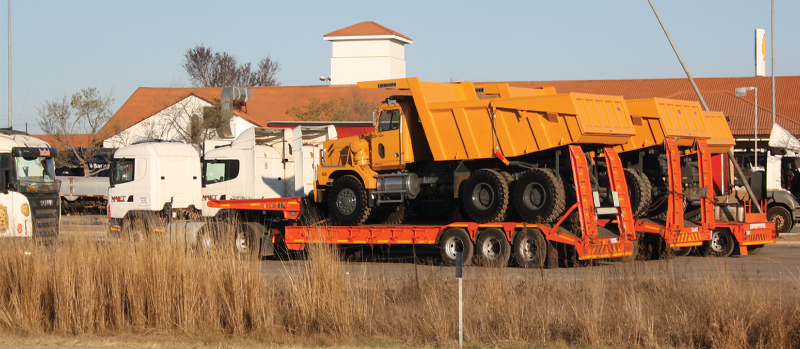
Limpopo covers about 10% of South Africa’s land mass and is home to about 10% of the country’s population. The 2011 census recorded 5.4-million residents. The main languages of the people of Limpopo are Sesotho, Xitsonga and Tshivenda but English is widely used in business and government.
The provincial government is run by the African National Congress, the same party that is power at national level. There are five district municipalities in Limpopo and the capital city is Polokwane (population 629 000).
The Provincial Government of Limpopo has committed itself to the Limpopo Economic Growth and Development Plan (LEGDP), which aims to build a stronger, more industrialised economy and to create jobs and reduce social inequality.
The Premier’s Employment Growth and Advisory Council has been created to coordinate the responses of government, the non-government sector and the private sector. Technical working groups, drawing from all three sectors, have been established to pursue the development plan in areas such as ICT, the green economy, enterprise development and relevant skills for the economy.
Existing manufacturing in the province is centred on mining areas (smelters and refineries), agricultural estates (juices and concentrates) and Polokwane (which has a strong suit in food and beverages).
Agri-processing is strong, with Pioneer Foods, McCain, Granor Passi, Kanhym, Westfalia and Enterprise Foods prominent, but this sector still has potential to grow.
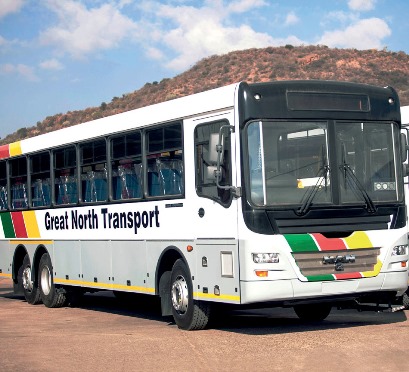
Transport within the city of Polokwane is being transformed by the introduction of a bus rapid transport system, Leeto la Polokwane. In the province as a whole, 22.6% of households in Limpopo use bus transport and 45.8% use taxis.
Great North Transport falls under the Limpopo Economic Development Agency. The company has more than 500 buses, covers about 36-million kilometres every year on 279 routes, employs more than 1 200 people and transports 37.6-million passengers.
The Polokwane International Airport (PIA) is wholly owned by the provincial government and run by the Gateway Airport Authority Ltd (GAAL), an agency of the Department of Roads and Transport. It has the potential to be an important regional cargo airport. SA Airlink offers 21 flights to Johannesburg six days a week. The airline also provides links between Phalaborwa and Johannesburg, and between Hoedspruit and Johannesburg and Cape Town.
The province also has a sophisticated rail network which Transnet Freight Rail aims to further expand, primarily to haul the province’s vast reserves of coal away to the coast at Richards Bay.
Special Economic Zones
One of the ways in which Limpopo is leveraging its strategic location is through the establishment of the Musina-Makhado Special Economic Zone. Recently promulgated by national government, the SEZ will have among its core functions the clustering of logistics operations.
Located in the Vhembe District in the far north, this SEZ is near the border of Zimbabwe and on the Great North Road, thus linking with the broader Trans-Limpopo Spatial Development Initiative.
Other focus sectors are agri-processing, energy and mineral beneficiation. Exxaro and De Beers have large mining operations nearby. A consortium of Chinese investors has agreed to run the SEZ’s mineral beneficiation operations.
A second application for an SEZ has been made within the province’s platinum belt in the east of the province. The Tubatse SEZ, in the Sekhukhune District Municipality, will focus on the beneficiation of platinum group metals (PGM) and mining-related manufacturing.
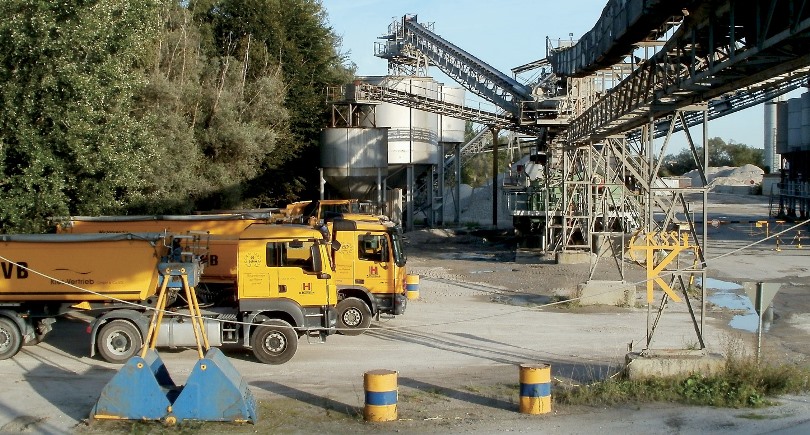
Large platinum mining operations are located on the eastern limb of the Bushveld Complex such as the Marula Mine and the northern limb has been seeing a lot of recent activity, with Ivanhoe Mines investing in a new mine. A smelter expansion by Northam on the western limb confirms that the mining sector is still very active in Limpopo.
The following areas have been identified as priority zones for the province’s industrialisation strategy: Polokwane, Lephalale, Tubatse, Tzaneen and the Makhado-Musina corridor.
Economic strengths
When it comes to exports Limpopo punches above its weight because of the abundance of mineral wealth under the ground, and the superb fruit and vegetables that the province’s farmers cultivate. Potatoes are grown, together with 75% South Africa’s mangoes and tomatoes; papayas (65%); tea (36%); citrus, bananas and litchis (25%) and 60% of the country’s avocadoes.
The best-performing sub-sector of South African exports over the last five years is fruit and nuts (www.worldstopexports.com). Limpopo has been a major contributor to the country’s excellent export record: avocadoes, mangoes and macadamia nuts from the province’s eastern regions are hugely popular in international markets and Limpopo’s commercial farmers are extremely efficient.
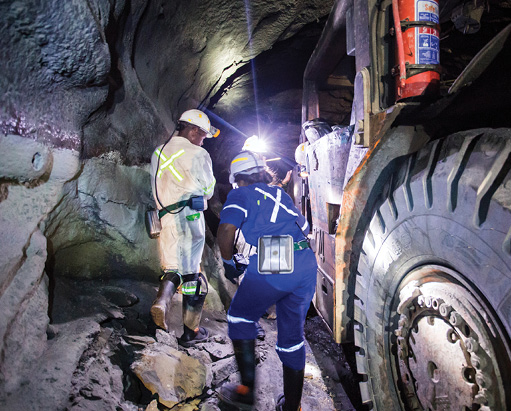
The province has huge reserves of coal, platinum, chromium, uranium clay, nickel, cobalt, vanadium, limestone and tin. Demand will always fluctuate, and the commodities cycle has recently been very volatile, but the world will always need minerals.
Limpopo’s assets include the largest diamond mine in South Africa, the biggest copper mine in South Africa, the biggest open-pit platinum mine in the country and the biggest vermiculite mine in the world.
The province has 41% of South Africa’s platinum group metals (PGMs), 90% of South Africa’s red-granite resources and approximately 50% of the country’s coal reserves. Antimony, a highly strategic mineral found in large quantities in China, is another of Limpopo’s major assets.
Two of the largest engineering projects in the history of South Africa have recently been undertaken in Limpopo. Both the Medupi power station (at Lephalale in the far west) and the De Hoop Dam (in the south-east) have the potential to give the region’s economy a massive boost.
The combined land area of Limpopo’s national, provincial and private game and nature reserves is 3.6-million hectares. According to the Premier’s office, the tourism sector employs about 22 400 people.

Regions
Limpopo’s dry, cattle-rearing, western areas contrast with the subtropical regions of the east where forestry thrives and the central regions where vast plantations produce 60% of the country’s tomatoes. The area north of the Soutpansberg Mountains is semi-arid. The Waterberg mountains stretch over 5 000 km² through the northern reaches of the province.
Limpopo has five district municipalities:
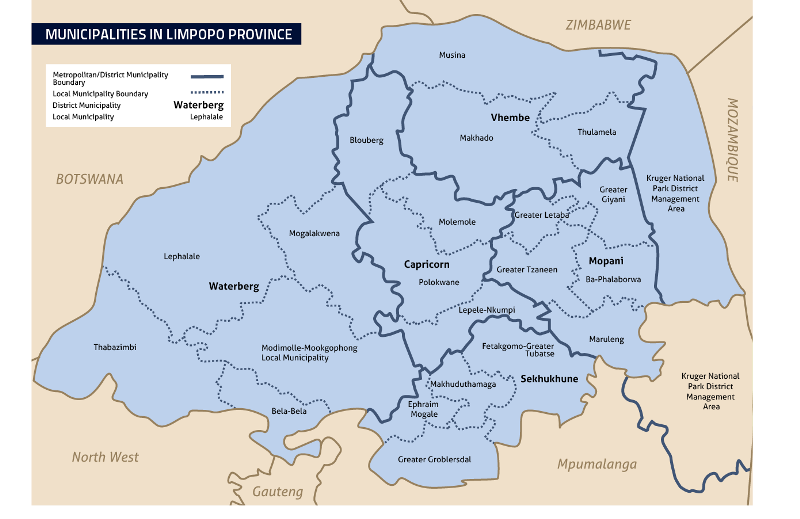
Capricorn District
Capricorn is the economic centre of Limpopo, with the provincial capital Polokwane contributing 13% of the provincial GDP. The cultivation of citrus, potatoes and tomatoes is done on a large scale in the district.
The capital city of Polokwane is the province’s main centre for industry, commerce, education and medical services. The city is close to big concentrations of mineral deposits and to fertile agricultural lands; its industries reflect this diversity. Large industrial concerns such as Silicon Smelters (one of the biggest of its kind in the world) and a big brewery run alongside at least 600 industrial enterprises of a smaller scale.
Polokwane has good hotel and conferencing facilities. Park Inn by Radisson Polokwane is the newest hotel to open in the city. Nearby Moria attracts up to a million people every year, when the Zion Christian Church celebrates Easter.
Sekhukhune District
Government is the largest employer in this southern district, followed by agriculture and hunting. The vast majority of households are rural (94%) and Groblersdal is the district capital. The region’s fertile lands produce maize, tobacco, peanuts, vegetables, sunflower seeds and cotton on a large scale. Agriculture makes up 25% of the economy. Burgersfort is an important town because of platinum mining.
Mopani District
Giyani is the administrative capital of the district and is key to the local economy. The public sector is one of the largest employers and the key sectors are agriculture and mining. Mopani has an established food manufacturing industry, in canned, preserved and dried-fruit production and vegetable juices.
Phalaborwa is the gateway to the Kruger National Park. It has a good airport and is a tourism hub. Palaborwa Mining Company (PMC) is the major economic driving force in the area. State-owned phosphate and phosphoric acid producer Foskor is another major employer. The Marula Festival is held in Phalaborwa every year.
A subtropical climate and fertile soils combine to make greater Tzaneen very productive in terms of fruit and vegetables. Limpopo’s second most populous city has a population of 80 000. The Letaba Valley produces a large proportion of South Africa’s mangoes, avocadoes and tomatoes. Forty sawmills operate in the area, drawing on the heavily forested hills around the city.
Vhembe District
The Vhembe District borders Zimbabwe and Botswana. The district’s administrative capital is Thohoyandou. Vhembe’s vast bushveld supports commercial and game farming and the district has considerable cultural and historical assets. Game farming is a growing sub-sector, as is eco-tourism. De Beers’ Venetia Mine, situated just west of Musina, is South Africa’s largest diamond producer.
Thohoyandou is the administrative centre of Thulamela Local Municipality, Vhembe District Municipality and the University of Venda. The Ivory Route passes through the district. Other attractions include an ancient baobab tree, the Dzata Ruins, the Museum of the Drum, the mystical Lake Fundudzi and Nwanedi Provincial Park.
Waterberg District
The mining sector is the largest contributor to regional GDP, while agriculture is also significant. Several towns in the district are in the mineral-rich Bushveld Igneous Complex.
The district also features the riches of the Waterberg Coal Fields, iron ore (at Thabazimbi) and tin and platinum at Mookgophong. The town of Lephalale is at the heart of the region’s coal-mining and power-generation sectors and is the site of Eskom’s huge new Medupi power plant which is under construction.
The area around Mokopane is one of the richest agricultural zones in South Africa, producing wheat, tobacco, cotton, beef, maize and peanuts. The bubbling hot springs of Warmbaths (Bela-Bela) is a popular tourism destination, and the district has many luxury golf estates. The Legend Golf & Safari Resort has the distinction of having had each of its 18 holes designed by a different famous golfer, and an extra hole which is very long (360 m) but also very high: it requires a helicopter ride to get to the tee-off point 400 m up the mountainside.

